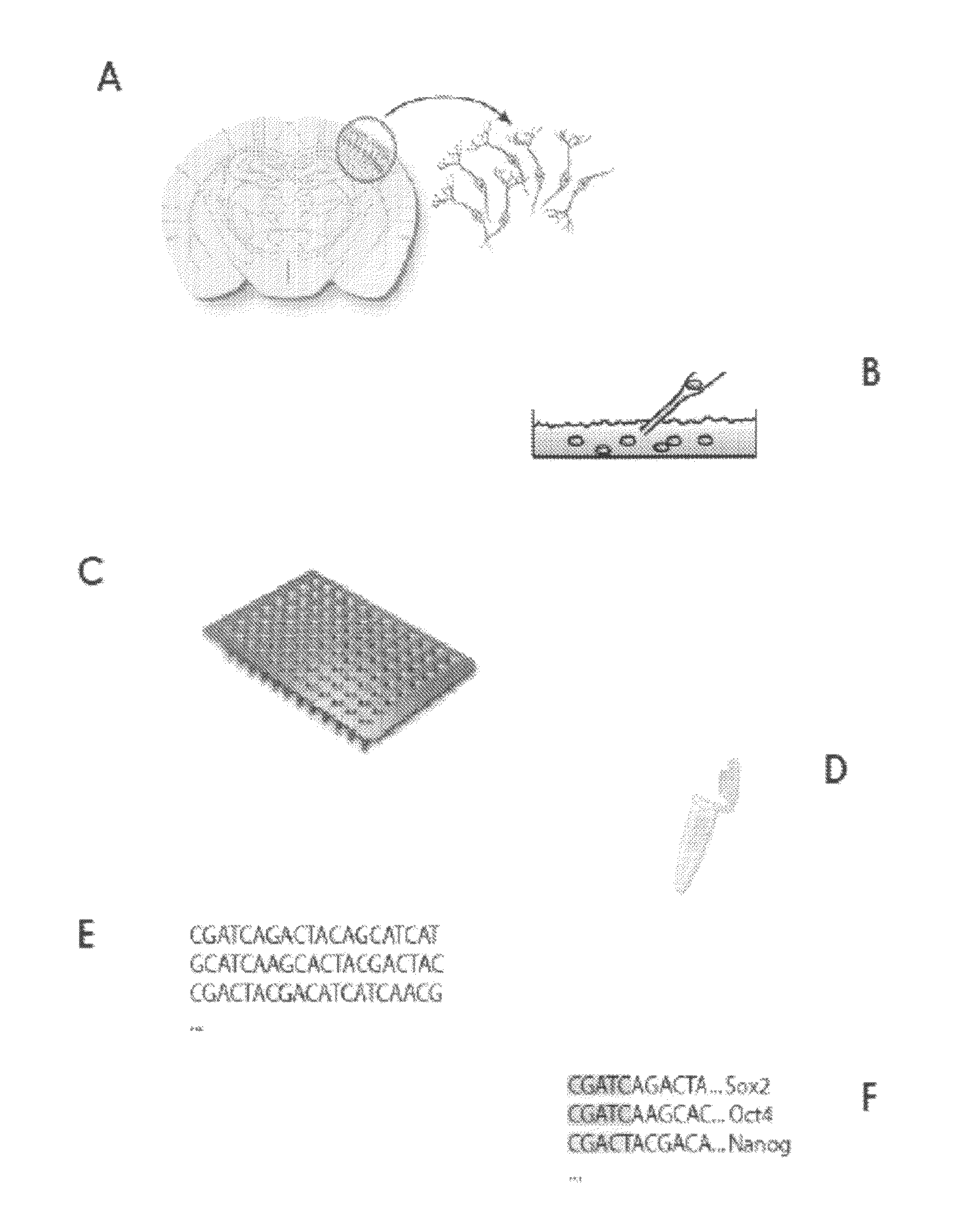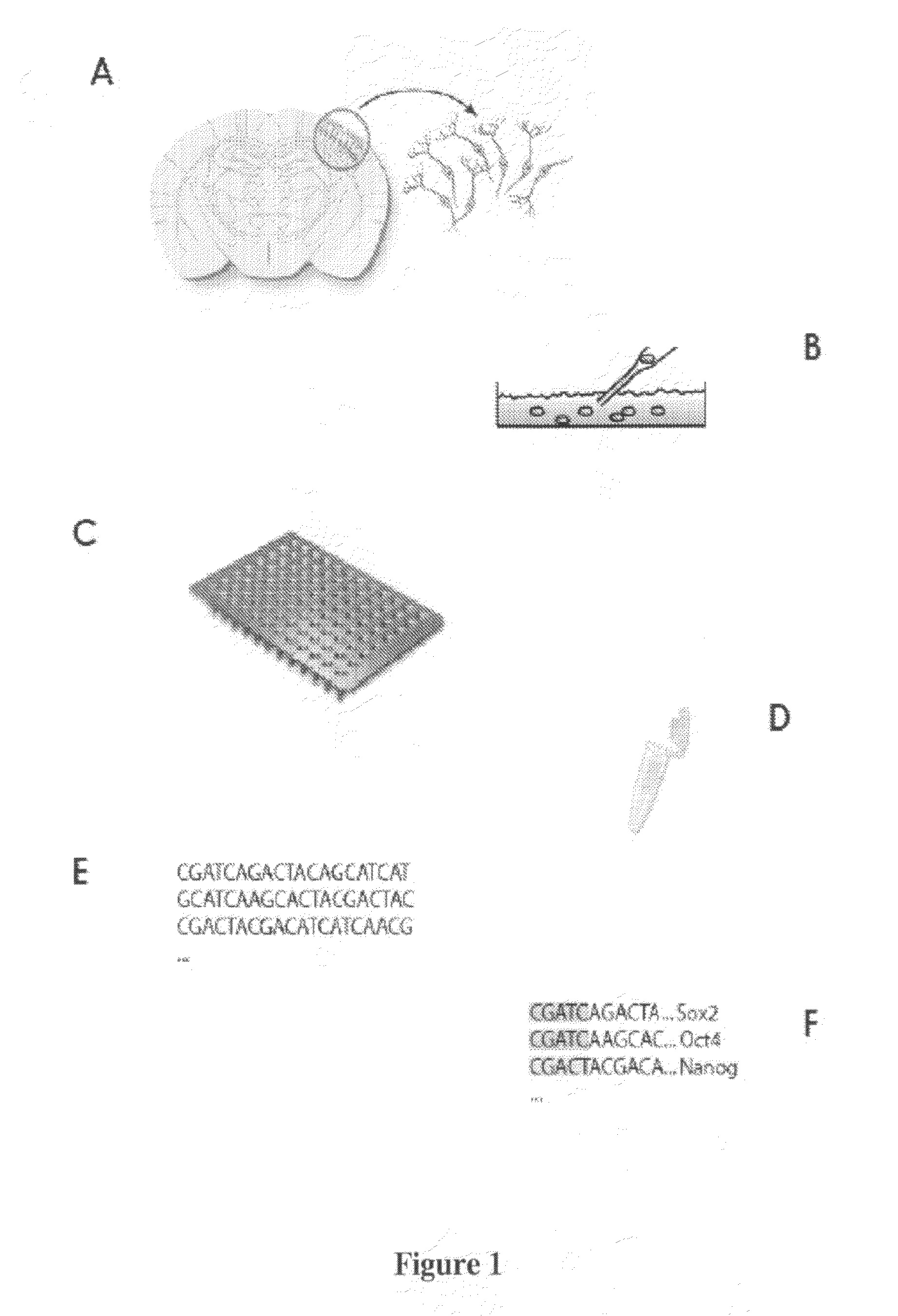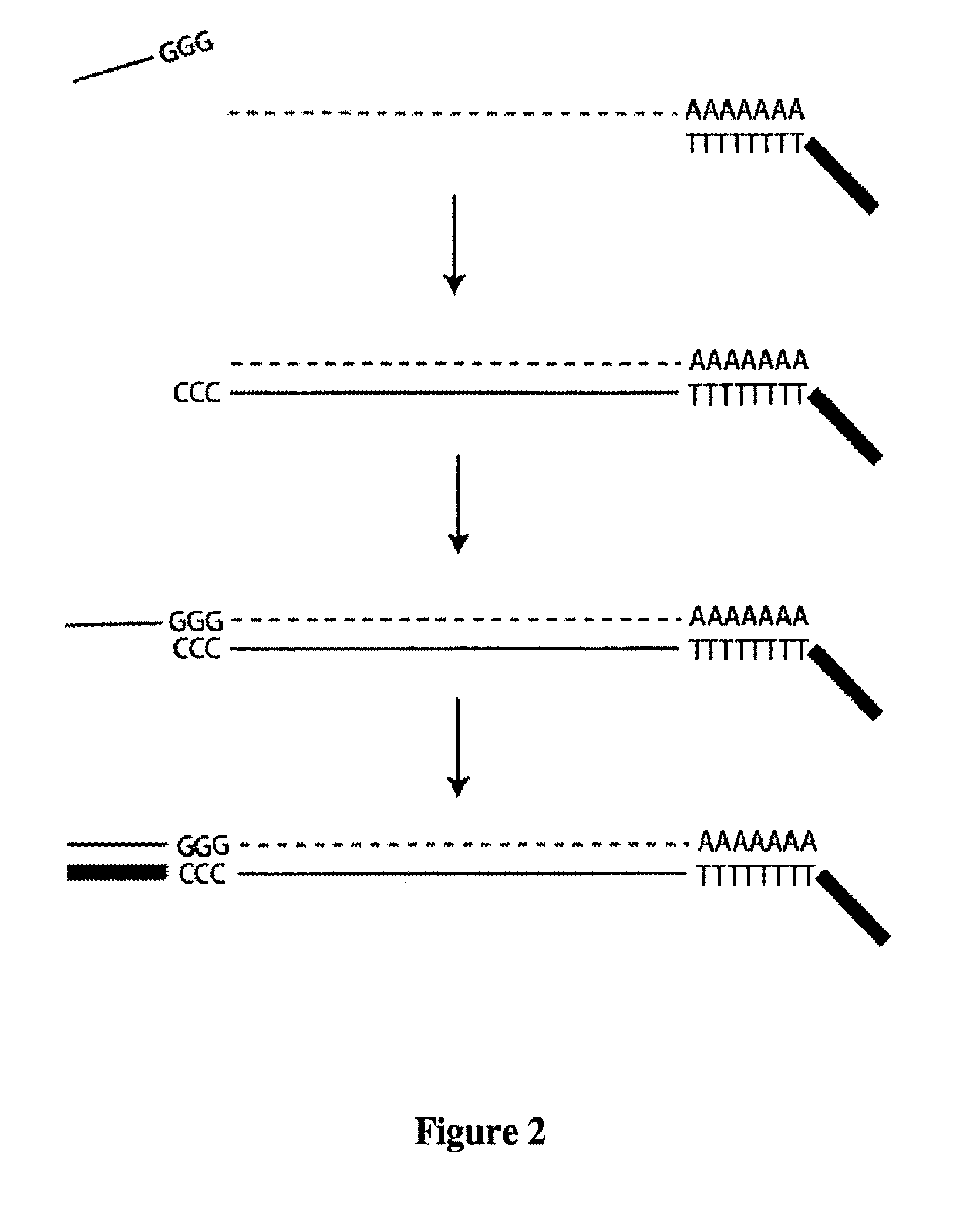Gene expression analysis in single cells
a gene expression and single cell technology, applied in the field of gene expression analysis in single cells, can solve the problems of unable to analyze alternative splicing, promoters and polyadenylation signals, and the loss of many functional information present in single cells, and achieve the effect of allowing previously known genes to be analyzed, and avoiding the loss of functional information
- Summary
- Abstract
- Description
- Claims
- Application Information
AI Technical Summary
Problems solved by technology
Method used
Image
Examples
example i
Single-Cell Tagged Reverse Transcription (STRT)
[0080]An embodiment of the method of the invention may be called “single-cell tagged reverse transcription” (STRT) and is described in detail below.
[0081]A 96-well plate containing Cell Capture Mix was made by aliquoting 5 μl / well from the Cell Capture Master Plate (see Table 1 below) into an AbGene Thermo-Fast plate.
TABLE 1Making a STRT Cell Capture Master Plate.FinalReagentFor one wellFor one plateconcentrationSTRT-T30-BIO0.25μL27.5μL400 nM(100 μM)STRT buffer (5x)12.5μL1375μL1xSTRT-FW-n (5 μM)5μL(5μL / well)400 nMWater44.754.9mLTotal62.5uL
[0082]27.5 μL STRT-T30-BIO (100 μM) was mixed with 1375 μL STRT 5× buffer and 4.9 mL Rnase / Dnase-free water. 57.5 μL of this solution was aliquoted to each well of a 96-well plate and 5 μL / well of STRT-FW-n (from 5 μM stock plate) was added, i.e. a different oligo in each well.
[0083]The sequence of STRT-T30-BIO (which is a CDS) is:
5′-BIO-AAGCAGTGGTATCAACGCAGAGT30VN-3′
[0084]and ...
example ii
Characterization of Single-Cell Transcriptional Landscape by Highly Multiplex RNA-Seq
[0125]Understanding of the development and maintenance of tissues has been greatly aided by large-scale gene expression analysis. However, tissues are invariably complex, consisting of multiple cell types in a diversity of molecular states. As a result, expression analysis of a tissue confounds the true expression patterns of its constituent cell types. Described herein is a novel strategy, termed shotgun single-cell expression profiling, was used to access such complex samples. It is a simple and highly multiplexed method used to generate hundreds of single-cell RNA-Seq expression profiles. Cells are then clustered based on their expression profiles, forming a two-dimensional cell map onto which expression data can be projected. The resulting cell map integrates three levels of organization: the whole population of cells, the functionally distinct subpopulations it contains, and the single cells th...
PUM
| Property | Measurement | Unit |
|---|---|---|
| diameter | aaaaa | aaaaa |
| concentration | aaaaa | aaaaa |
| concentration | aaaaa | aaaaa |
Abstract
Description
Claims
Application Information
 Login to View More
Login to View More - R&D
- Intellectual Property
- Life Sciences
- Materials
- Tech Scout
- Unparalleled Data Quality
- Higher Quality Content
- 60% Fewer Hallucinations
Browse by: Latest US Patents, China's latest patents, Technical Efficacy Thesaurus, Application Domain, Technology Topic, Popular Technical Reports.
© 2025 PatSnap. All rights reserved.Legal|Privacy policy|Modern Slavery Act Transparency Statement|Sitemap|About US| Contact US: help@patsnap.com



